
All categories
Featured selections
Trade Assurance
Buyer Central
Help Center
Get the app
Become a supplier

(1027 products available)














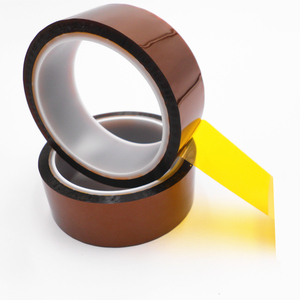
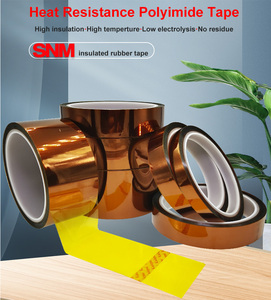

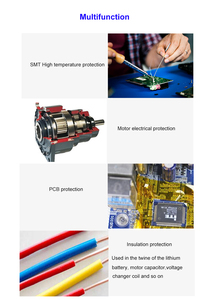












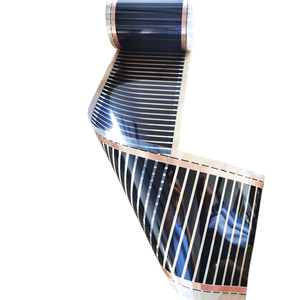


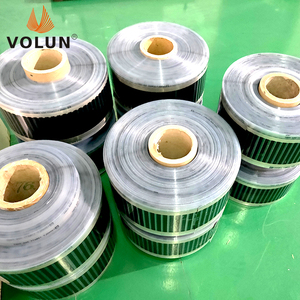

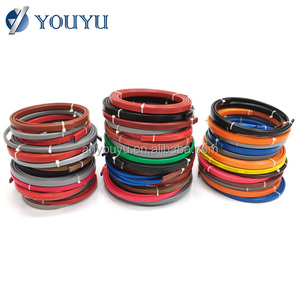
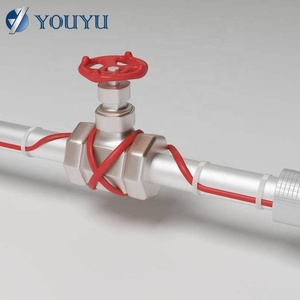



Electrical trace heating tapes are a family of heating elements that provide a way to maintain heat and prevent freezing temperatures in various applications. Different types of heating tapes offer various features and benefits for distinct needs:
This type of heating tape provides a consistent heat output along its entire length. It is suitable for applications where uniform heating is required, such as maintaining the temperature of pipes and valves. However, it may overheat in some places.
This kind of heating tape can automatically adjust its heat output based on changes in the surrounding temperature. It is ideal for complex piping systems or applications where the heating requirements vary. The feature of self-regulating also makes it more energy-efficient and reduces the risk of overheating.
This heating tape is usually made of a single conductive material, which is directly exposed to the surface that needs heating. It is suitable for applications that require rapid response times or high-temperature ranges. However, it may be vulnerable to damage or corrosion in harsh environments.
Compared with bare heating tapes, insulated heating tapes have an insulating layer to protect the heating element. This design minimizes heat loss and improves energy efficiency. It is suitable for applications where precise control of the heating process is required. The insulation layer also makes it more durable in harsh environments.
This heating tape is designed to withstand moisture and humidity. It is suitable for applications in damp or wet environments, such as freeze protection in outdoor areas or de-icing on roofs.
As the name suggests, this heating tape can withstand extremely high temperatures. It is suitable for high-temperature industrial processes or applications that require extreme heat. The heating tape is often made of advanced materials with high-temperature resistance.
This type of heating tape is equipped with a thermostat for temperature control. It can automatically turn on and off the heating element to maintain a set temperature range. This makes it ideal for energy efficiency and precise temperature control.
Electrical heat tracing tape comes in various configurations to suit different applications. Here are some design specifications of electrical heat tracing tape.
The maintenance of electrical heat tape is an important part of keeping the system functioning properly and ensuring safety. Regular inspections should be scheduled to check for any visual damage, such as cuts, nicks, abrasions, or signs of overheating or burning. If any damage is found, the tape must be repaired or replaced by a qualified professional. It is also necessary to check the connections and terminations for any corrosion, loose, or damaged parts and make sure they are properly secured and insulated. In addition to the visual inspection, it is important to test the heat tracing system regularly to ensure it is properly functioning. This involves measuring the temperature of the pipe or surface being heated along the entire length of the tracing tape and comparing it to the expected temperature. By performing regular inspections, maintenance, and testing, users can ensure the electrical heat tracing tape is operating safely and effectively.
An electrical heat tracing tape is a versatile product used in various industries and applications that require freeze protection, temperature maintenance, and heat distribution. Here are some common scenarios of the heat tracing tape in different industries.
Heat tracing tapes play a significant role in the chemical processing industry. They are used to maintain the optimal temperature of pipelines, storage tanks, and reactors. This helps prevent product solidification, maintain consistent fluid viscosity, and ensure the chemical processes run smoothly and efficiently.
In the food processing industry, heat tracing tapes are used to prevent freezing and maintain hygienic conditions in pipelines, storage tanks, and equipment. By using heat tracing tapes, manufacturers can avoid product spoilage, ensure food safety, and meet regulatory standards.
In the oil and gas industry, heat tracing tapes are used to prevent the freezing of oil, gas, and water in pipelines. They help maintain flow and operational efficiency in cold weather conditions. Electric heat tracing tapes can be used in various scenarios in the oil and gas industry, including upstream, midstream, and downstream operations.
In the power generation industry, electrical heat tracing tapes are used to maintain the temperature of pipelines and equipment, such as heat exchangers and turbines. They prevent freezing and ensure the continuous and reliable operation of power plants.
In the water and wastewater industry, heat tracing tapes are used to prevent the freezing of water, sewage, and chemical pipelines. They ensure the continuous operation of water treatment plants and distribution systems, even in cold weather conditions.
In the automotive industry, heat tracing tapes are used for various applications. For example, they can be used to prevent the freezing of lubricants, coolants, and other fluids in vehicles. They can also help maintain the optimal temperature of adhesive curing, paint drying, and other manufacturing processes. In addition to the above applications, heat tracing tapes are also used in other industries. For example, in the pharmaceutical industry, heat tracing tapes can be used to maintain the temperature of sensitive medications and chemicals, ensuring their stability and efficacy. In the mining industry, heat tracing tapes can be used to prevent the freezing of water and chemical pipelines, helping to ensure the safety and efficiency of mining operations.
When choosing the right electrical trace heating tape, there are several factors that one may need to consider.
Consider the project's specific requirements, such as the type of pipeline or equipment to be heated, the required power output, and the need for temperature control. Different types of electrical trace heating tapes are suitable for various applications. For example, self-regulating heating tapes are more suitable for complex pipelines and areas requiring temperature control.
Consider the working environment of the heating tape. This includes factors such as temperature range, exposure to chemicals or corrosive substances, and the presence of potential hazards or explosion risk. Choose heating tapes with appropriate insulation and protective layers to ensure they can operate safely and effectively in the environment.
Consider the performance of the heating tape, such as the maximum temperature it can achieve, the heating efficiency, and the suitability for the installation structure. Compare the technical specifications of different heating tapes and select the one that best meets the project's requirements.
Choose a well-known brand of heating tape to ensure its quality and reliability. Additionally, ensure that the heating tape meets relevant industry standards and certifications to guarantee its performance and safety.
Compare the cost of different heating tapes and consider the price-performance ratio. While ensuring the quality and performance of the heating tape, choose the one that suits the project's budget.
Choose a supplier with a good reputation and reliable after-sales service. Suppliers with excellent support can provide technical guidance and assistance during the selection and installation of heating tapes, solving problems in a timely manner and ensuring the smooth progress of the project.
Q1 How does electrical trace heating tape work?
A1 The tape provides heat to pipes using a heating element within the tape. This maintains the temperature of the pipes and prevents freezing.
Q2 What are the benefits of electrical trace heating tapes?
A2 Among other benefits, these tapes are cost-effective. They do not require the cost of a separate power distribution system. Businesses can use a single power supply to connect multiple tapes. Also, the tapes are flexible. They can be customized to suit various pipe shapes and configurations. Furthermore, they are easy to install. Finally, these tapes have low maintenance requirements.
Q3 How long do electrical trace heating tapes last?
A3 Generally, these tapes are durable and built to last. If the tapes are well maintained, they can last between 15 and 20 years or more.
Q4 What is the ideal temperature for electrical trace heating tapes?
A4 The ideal operating temperature for the heating tape is below the maximum allowable temperature of the pipe. It should also be above the temperature where the substance within the pipe freezes.
Q5 Are electrical trace heating tapes safe to use on plastic pipes?
A5 Yes, they are safe to use on plastic pipes. However, users must install them in compliance with the manufacturer’s guidelines. Also, the tapes must have temperature control devices to prevent overheating.